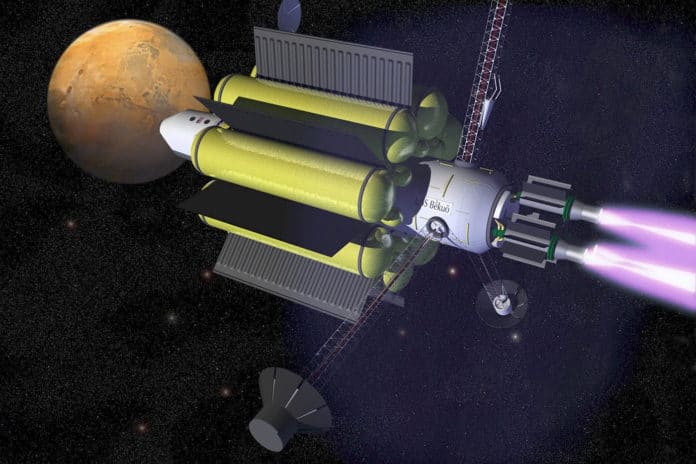Engineers from various organizations, including the US space agency NASA, are exploring revolutionary new technologies that could help us to get to Mars in much less time. The rocket engines based on plasma are one of the options proposed for human exploration on the Red Planet and beyond.
Well, it seems like NASA and SpaceX already have a new rival in the Martian program. Ad Astra, the startup founded by physicist and former astronaut Franklin Chang Diaz, is designing a plasma rocket engine called VASIMR, that will allow a larger crew to reach Mars three times faster than a conventional rocket.
The VASIMR engine was born from the imagination of the NASA astronaut, who flew on the space shuttle seven times during his NASA days and holds a Ph.D. in plasma physics from MIT. The plasma rocket technology will be the key to a Mars vehicle that will be faster and more efficient than any old-style chemical rocket.
Chemical rockets burn gases – such as hydrogen and oxygen – that create thrust when leaving the nozzle. On the other hand, the plasma rocket does not burn fuel like a combustion engine. It rather uses high-intensity electromagnetic fields to heat up a gas, to temperatures millions of degrees hotter than ordinary combustion can reach, to generate plasma. This high temperature translates into a far greater thrust than chemical rockets can provide when the gas is allowed to escape through a magnetic rocket nozzle.
The scenario Chang Diaz projects for a Mars mission could let astronauts travel two to three times faster. The VASIMR engine will be powered by a standard nuclear reactor, those used in nuclear submarines. According to CBC, this plasma-powered spacecraft can deliver 60 tons of cargo to Mars in 90 days only.
